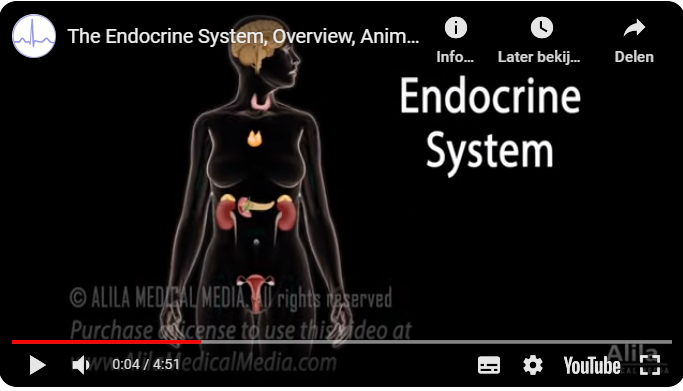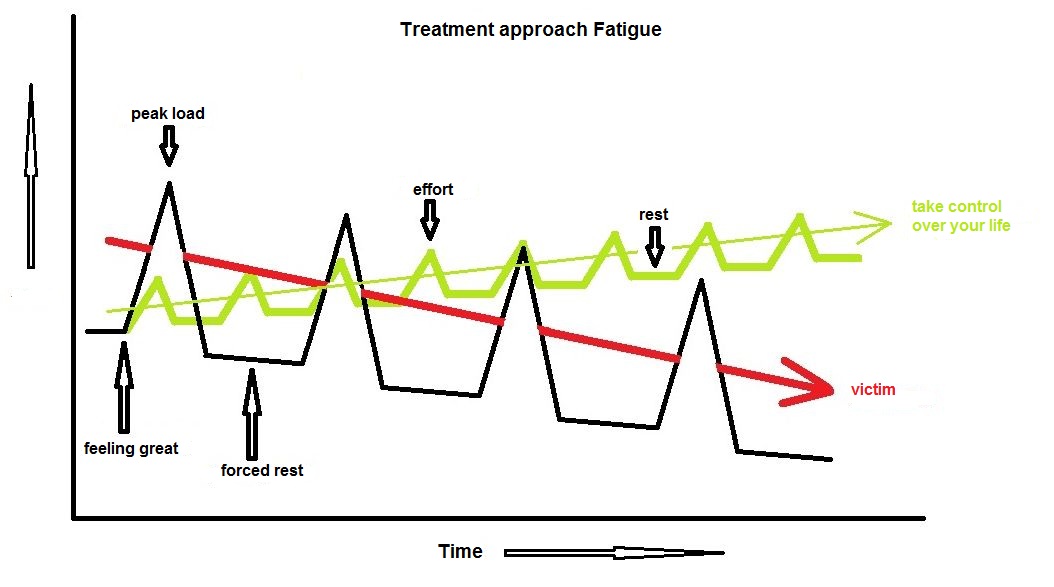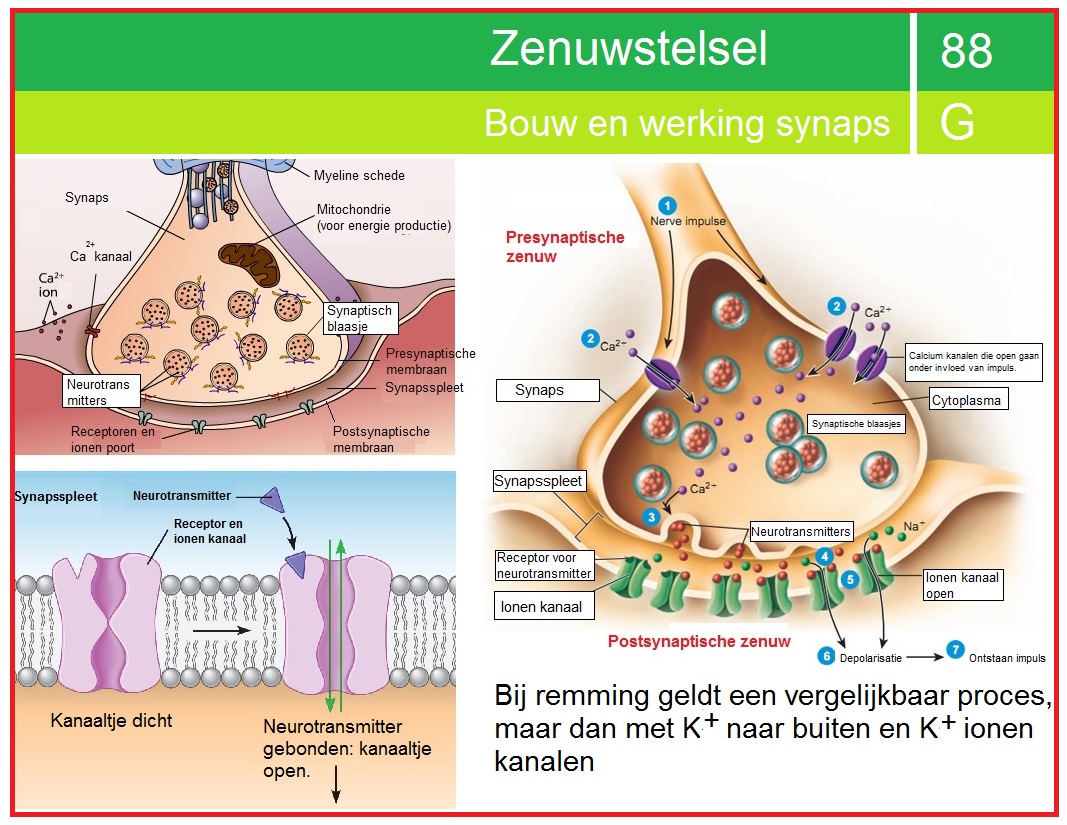- Home
- Personality
- What is stress?
What is stress ?
Ga HIER naar de Nederlandse versie van deze pagina
Stress is used a lot in everyday life, and in science. Many definitions can be found on the Internet. But on this website I always want to keep it simple. The explanation will hopefully make everything clear about stress. Enjoy reading!
Stress and homeostasis (=balance)
The origin of the word 'stress' in the medical sense can be traced back to one scientist, Hans Selye (1907-1982), an Austrian with a Hungarian father. In fact, he is at the basis of stress research. He was very interested in how patients around the world responded to illness. These response patterns turned out to be surprisingly similar across many cultures.
This stress response pattern is a certain physical, mental and behavioral response to something perceived as threatening: an illness, an attack (both physical and verbal), a certain pressure (=stress is the English word for pressure, actually derived from physics). The stress response is always intended to restore the natural balance in the body.
Selye therefore thought that 'stress' is part of life because there are always threats to this natural balance in life. The body has a built-in mechanism to ensure that all kinds of fundamental processes run smoothly. For example, the heart rate, blood pressure, the blood itself, muscle tension, brain pressure, your body temperature must all remain within a certain healthy range.
For example, if an infection occurs somewhere due to an attack by a bacteria, the body temperature rises (fever) because the immune system tries to kill the bacteria. The natural balance is then disturbed or threatened and the physical reaction is then called stress, or also the stress response. The threat is called the 'stressor'.
Well-known stressors are, for example, loud noises, heat, high air pressure, high pressure (e.g. time pressure or heavy work), violence from people (both physical and verbal).
Stress in the medical or psychological sense
The stress, or stress response (I'll always refer to it as "stress" below), is a particular bodily response to a threat. Changes can be seen in the voluntary and autonomic nervous systems, the hormonal system, the muscular system, respiration and externally observable behavior.
Psychologically, you can equate stress with emotions. Emotions are exactly the same physical reactions that are usually understood by the term 'stress'. In the scientific literature on stress, this almost always concerns negative emotions in an increased intensity. Then it is about Fear, Sadness or Anger; in other words, about Afraid, Sad or Angry. Stress is rarely about Happiness. But Happiness, especially if it is too intense, is also an attack on the body because all kinds of body values are temporarily elevated there too. For example: a higher heart rate, higher muscle tension, higher blood pressure. But usually that is not referred to as 'stress', either in the common (street) language or in the scientific literature.
But to be clear: laughing too hard and for a long time from intense joy can be fatal because of a sharp increase in your blood pressure and muscle tension, among other things.
To be clear, on this page I will consider "stress" as most scientists and people understand stress: intense negative emotions.
Stress = Intens emotions
There is a clear reason why, as a neuropsychologist, I want to see Stress as intense basic emotions. I think science has unfortunately made things more difficult by inventing the word "stress." Because 'stress' is really nothing more than something we've known for centuries: emotions. I believe that using the word "stress" has not helped solve emotional problems in this world. Stress has only made it more difficult to explain to patients and clients. Mainly because by using the word almost everyone does not quickly realize that too intense emotions are the cause of many diseases and suffering.
If we had kept the psychological model simple from the start, you could always have explained how emotions are nothing more than bodily reactions, and that thoughts are strongly linked to them. In this way, people would have understood much faster that staying healthy is all about emotion regulation: trying to keep emotions within a certain bandwidth at all times. Within a natural and healthy balance. For a more detailed explanation of a (neuro)psychological model of humans, see this page about the Personality Model.
Emotions: 2 systems
If there are 7 basic emotions, according to Jaak Panksepp's model (see also page about Personality Model), then these are all bodily processes. At least 2 systems are closely involved: our nervous system and our endocrine or hormonal system.
Our nervous system is conveniently divided into 2 parts: the central nervous system (CNS) which has a bony sheath (contained by bones) and the peripheral nervous system (PNS). The central nervous system includes the brain (large and small), the brain stem, and the spinal cord. Everything beyond that is called the peripheral nervous system and is actually the connection between the CNS and the rest of the body.
The nervous system not only includes nerve cells, but also the glial cells (= supporting cells). In recent years it has become increasingly clear that these support cells also participate extensively in regulating our body. As an example, I can mention the relatively recently (2012) discovered Glymphatic system: a waste disposal system in our brain in which the glial cells play an important role. See the wikipedia page about this system.
The peripheral nervous system (PNS) consists of 12 cranial nerves (which originate from the brain) and in the spinal cord 31 pairs of spinal nerves, each of which communicates with specific parts of the body.
To keep it clearer, a simple picture is shown below.
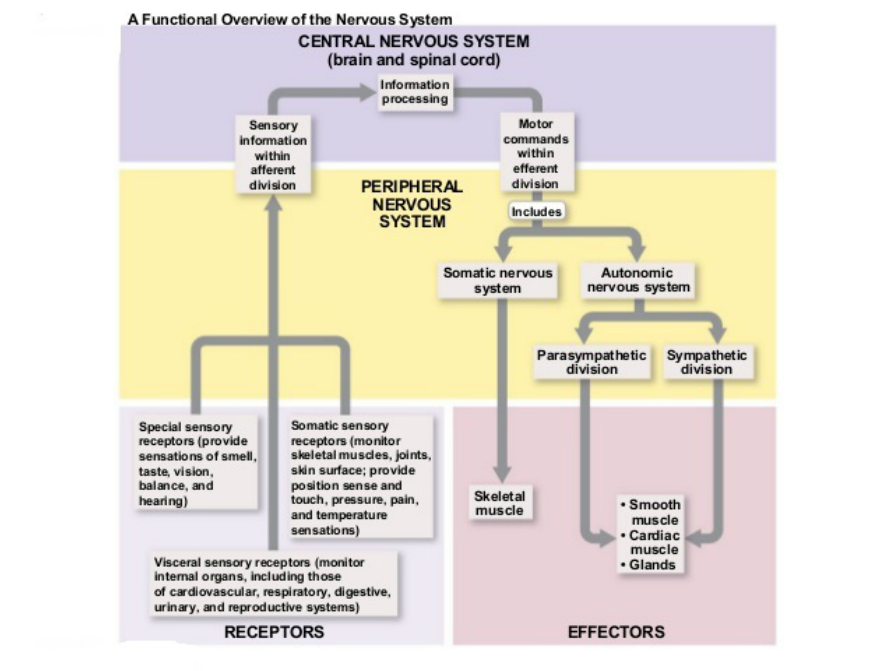
The peripheral nervous system (PNS) consists of 12 cranial nerves (which originate from the brain) and in the spinal cord 31 pairs of spinal nerves, each of which communicates with specific parts of the body.
To keep it clearer, a simple picture is shown below.
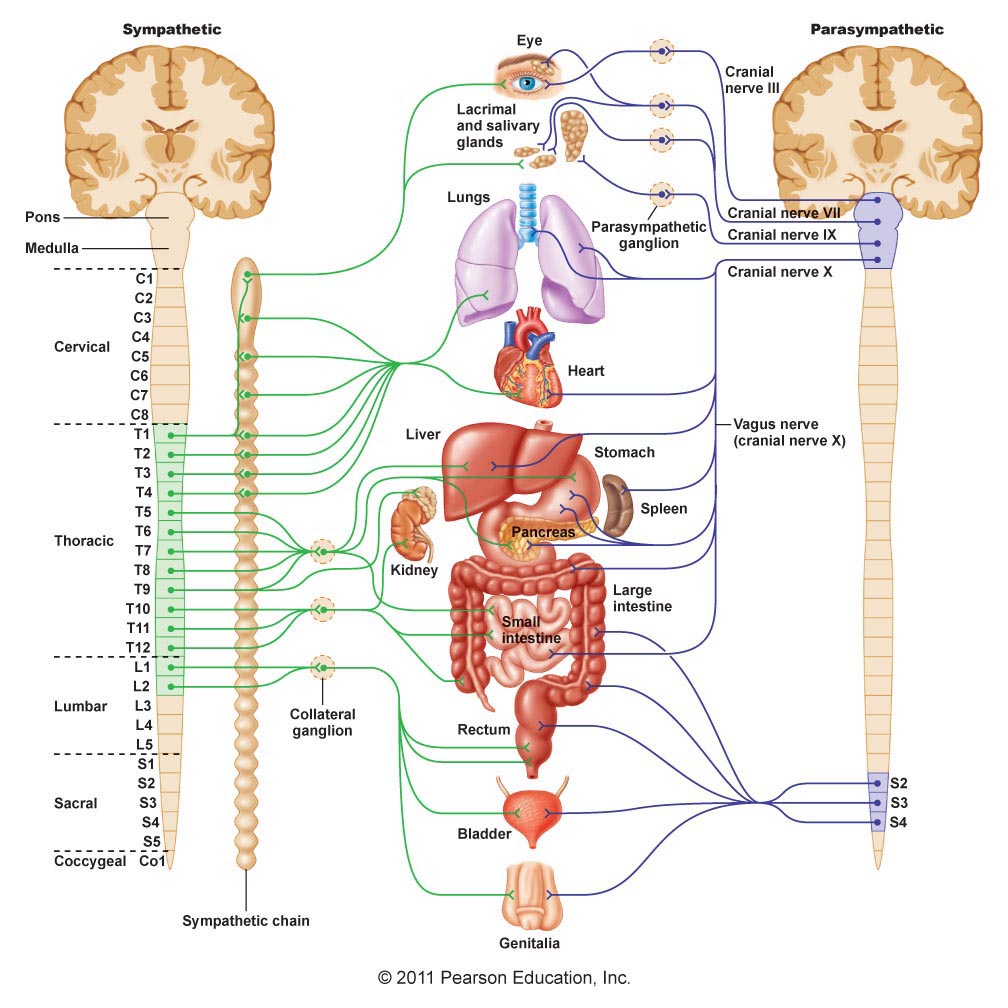
Above the Autonomic nervous system: sympathetic and parasympathetic part
The endocrine system
To make things even more complicated, we have not only nerve cells and glial cells, but also cells that make and secrete hormones, the hormonal or endocrine system.
Wikipedia (Dutch page, 2023) says the following about this:
The endocrine system or hormone system is the organ system that oversees the hormonal regulation in the animal organism. The endocrine system thus works with the nervous system to regulate the activity of organs and physical systems.
In the human body, the endocrine system is largely controlled by the hypothalamus and pituitary gland, two small parts of the brain. The pituitary gland can activate various glands in the body by releasing signal substances, hormones. These activated endocrine glands in turn release hormones into the bloodstream. The hormones are transported to the target organs via the blood.
Depending on the target organ and the type of hormone, the hormone has a certain effect on the organ in question. The hormones released by the glands can also have an inhibitory effect on the release of the relevant signaling substances by the pituitary gland. This creates a physiological equilibrium (homeostasis).
The endocrine system plays a crucial role in, among other things, the control of emotions, drives, the stimulation of growth and repair of muscles and tissues, sexual development, regulation of body temperature and metabolism."
The YouTube video below explains much more in detail about the hormonal system. It takes about 5 minutes.
Is stress harmful ?
Short answer: no. Stress itself is part of everyday life. In fact, only prolonged stress is harmful to your body. How long does stress have to last before it has really harmful consequences? This varies from person to person because it depends on the person's overall physical condition and cognitive abilities to deal with stress. If both factors are negative, the duration of stress before damage occurs in the body will be shorter.
Summary
Stress is really nothing but strong, intense emotions. Emotions are part of everyday life, so is stress. How emotions are expressed in the body is controlled by at least two major systems: our nervous system and our hormonal system. Our nervous system is a very fast system because it is mainly electrical. But our hormonal system is generally much slower because it works through a chemical pathway.
It is important to realize that all organs in our body are affected by stress or emotions.
Have A Great Story About This Topic?
Do you have a great story, remarks or any additions to or about this? One that could help other people as well and above all is constructive? Then please share it!
DISCLAIMER
I will not take any responsibility for how the information on this website will affect you. It always remains your responsibility to handle all information with care and in case of medical or mental problems you should ALWAYS consult a professional in your neighbourhood!
Ik neem geen enkele verantwoordelijkheid voor hoe de informatie op deze site u zal beïnvloeden. Het blijft altijd uw verantwoordelijkheid om al deze informatie zorgvuldig te bekijken. In het geval van lichamelijke en/of mentale problemen dient u ALTIJD een professional in uw directe omgeving te waarschuwen!
